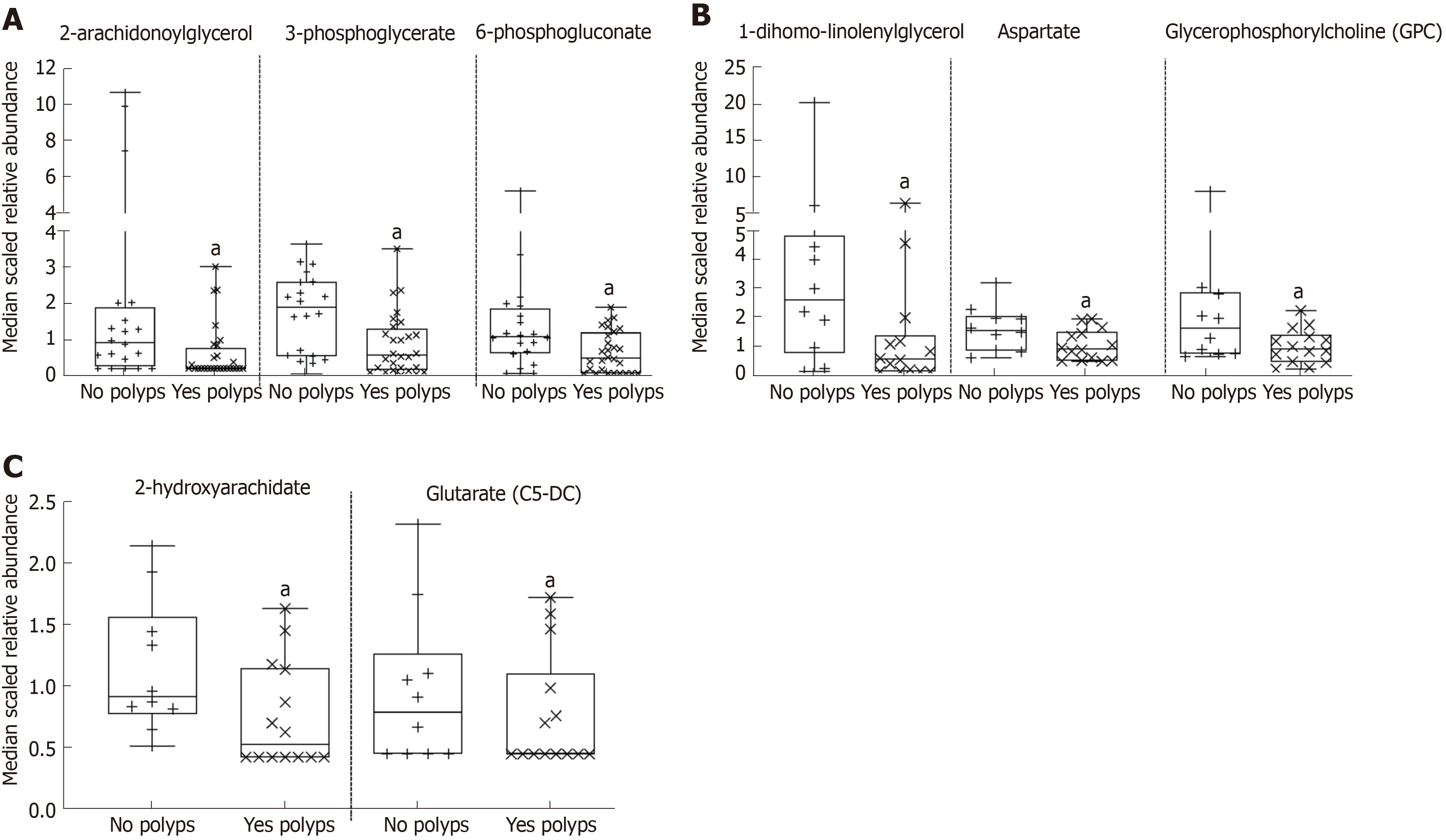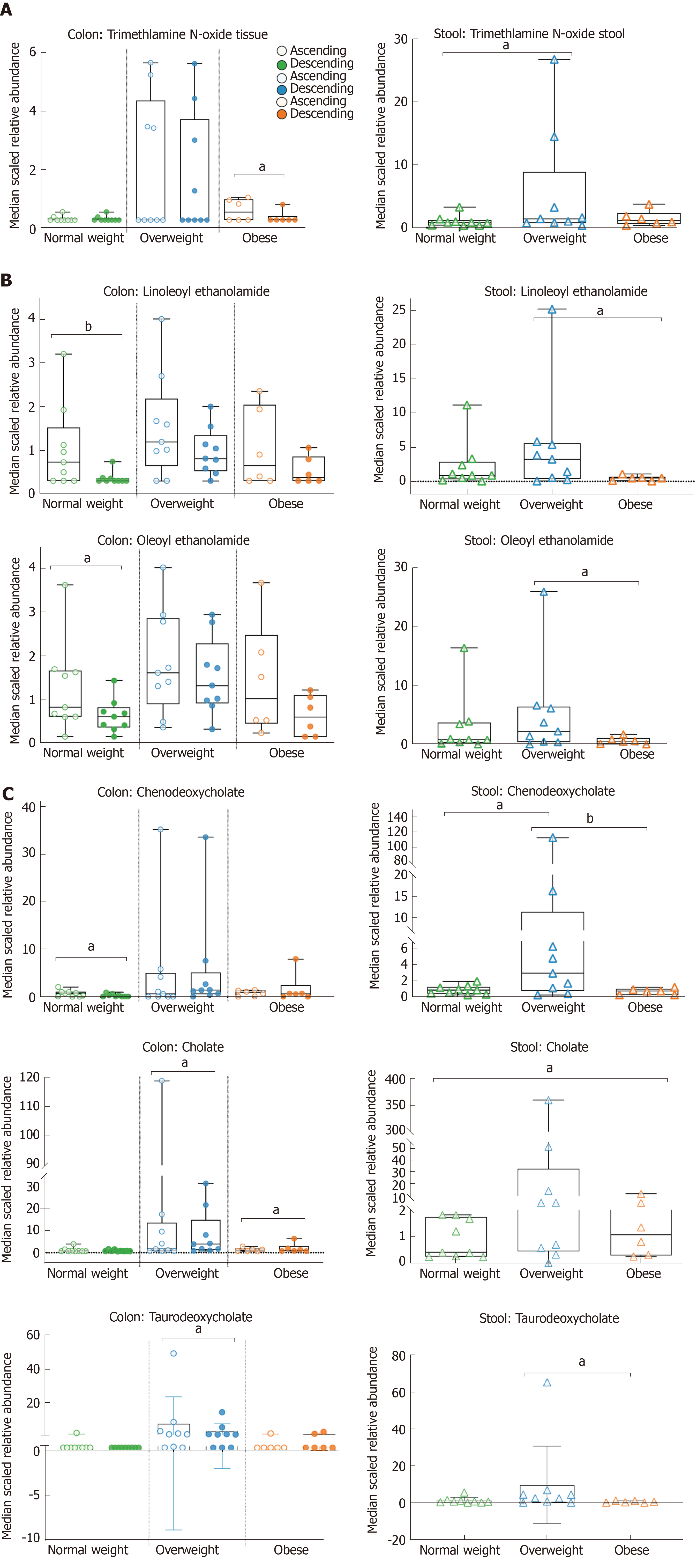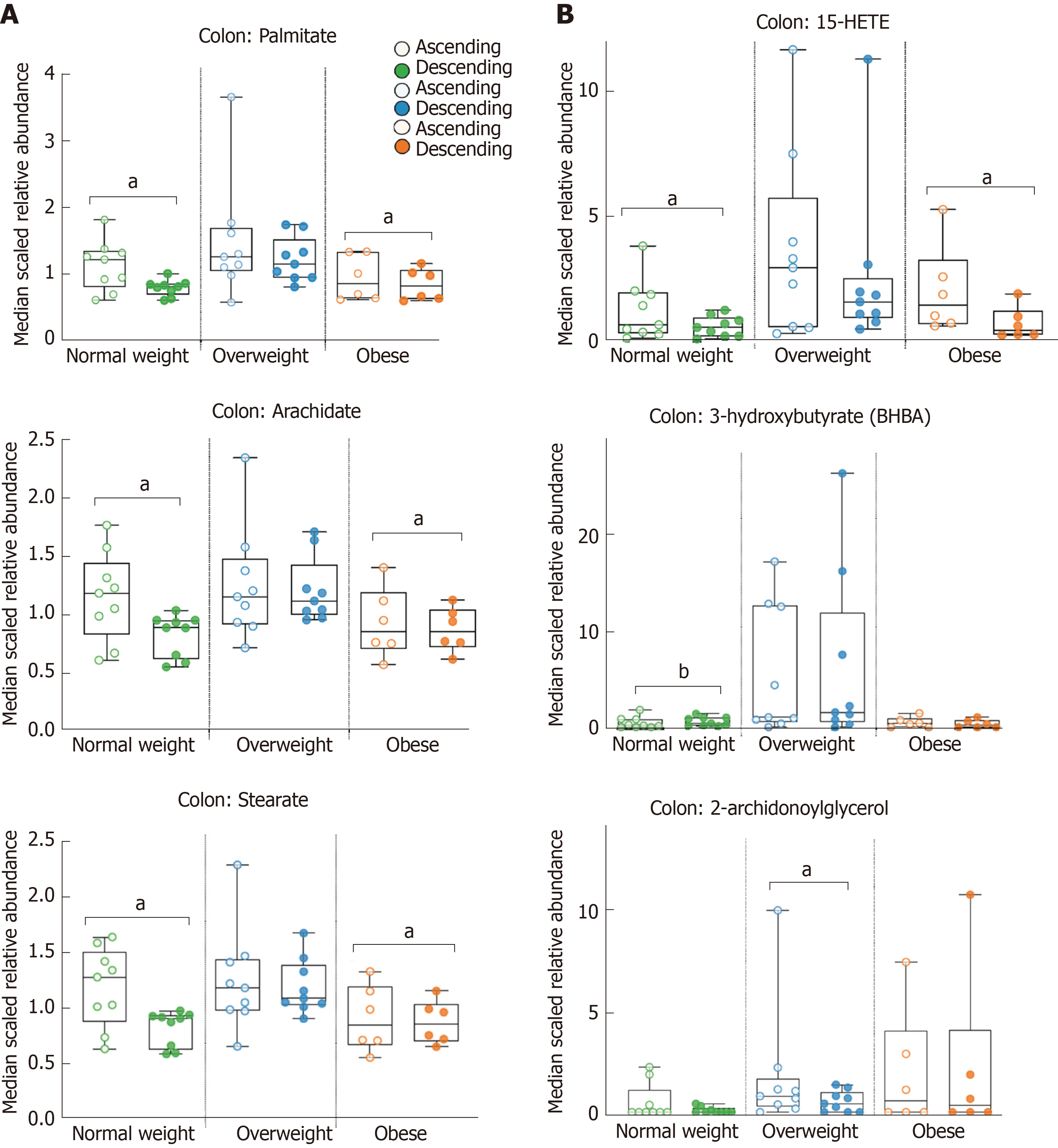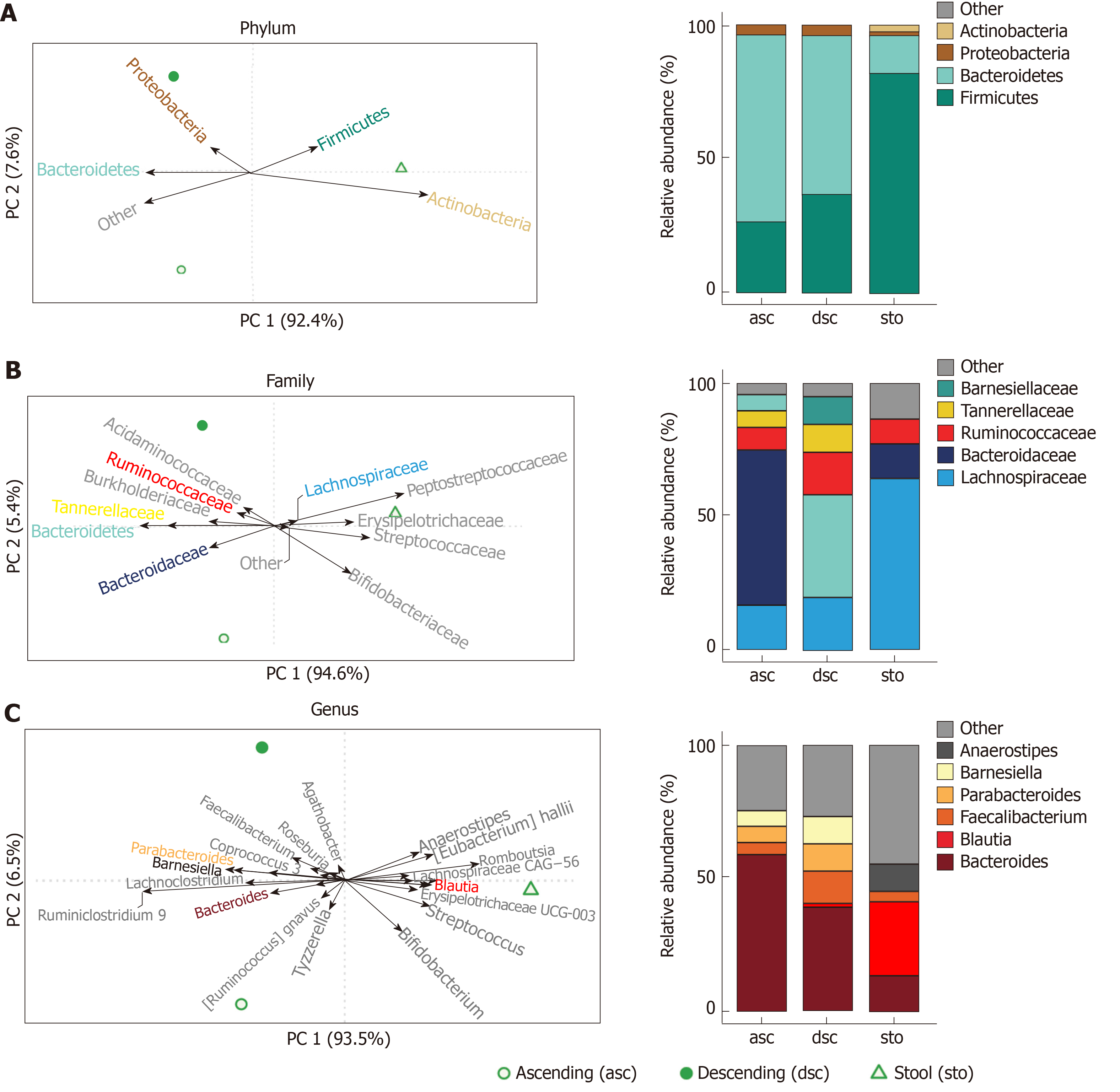Copyright
©The Author(s) 2020.
World J Gastroenterol. Jan 21, 2020; 26(3): 335-352
Published online Jan 21, 2020. doi: 10.3748/wjg.v26.i3.335
Published online Jan 21, 2020. doi: 10.3748/wjg.v26.i3.335
Figure 1 Comparison of colon tissue metabolites between adults with and without polyps.
A: Colon metabolite abundance differences from both ascending and descending colon; B: Metabolite abundance in ascending colon; C: Metabolite abundance in descending colon. Statistical significance was examined using linear regression analysis (aP < 0.05).
Figure 2 Fold-differences of colon and stool metabolites according to body mass index.
Metabolites were A: Phospholipid; Trimethylamine N-oxide; B: Endocannabinoids; linoleoyl ethanolamide, and oleoyl ethanolamide; C: Primary and secondary bile acids; chenodeoxycholate, cholate, and taurodeoxycholate. Left side panel colon, right side panel stool. Open circles represent ascending colon, closed circles represent descending colon, triangles represent stool (aP < 0.05, bP < 0.01).
Figure 3 Fold-differences of ascending vs descending lipid metabolites in normal weight, overweight and obese adults.
A: Long chain fatty acids; palmitate, arachidate, and stearate; B: Microbiome influenced metabolites; 15-HETE, 3-hydroxybutyrate (BHBA), and 2-arachidonoylglycerol. Open circles represent ascending colon, closed circles represent descending colon (aP < 0.05, bP < 0.01).
Figure 4 Composition of microbiota from stool, ascending and descending colon in a healthy, normal weight adult.
Left side shows principal components analysis biplots of centred log-ratio transformed relative abundances at the phylum; A: Family; B: Genus; C: Levels. Lines with arrows represent individual taxa. Right side shows relative abundance bar charts for the most abundant taxa at the respective taxonomic level across stool and colon location sample types.
- Citation: Baxter BA, Parker KD, Nosler MJ, Rao S, Craig R, Seiler C, Ryan EP. Metabolite profile comparisons between ascending and descending colon tissue in healthy adults. World J Gastroenterol 2020; 26(3): 335-352
- URL: https://www.wjgnet.com/1007-9327/full/v26/i3/335.htm
- DOI: https://dx.doi.org/10.3748/wjg.v26.i3.335












